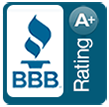How do I know if there is mold in my crawl space?
If your crawl space has open vents, it is allowing humid air from the outside to enter the space. As that humid air cools in the crawl, Relative Humidity Levels rise creating the perfect conditions for mold to grow. If the RH levels go above 100%, condensation will occur in every surface, soaking your floor joists, beams, and other structures. With a vented crawl space, the question is not whether it has any mold, but how much damage is being caused by it.
How to kill crawl space mold?
Depending on how big the mold problem and how much damage it caused, solutions can range from fungicide application to removal and replacement of moldy structures. This is not a DIY job, so please leave it to professionals. Now, the most important thing is to address the moisture that caused the problem in the first place so that it will not keep coming back. Sealing and encapsulating the crawl space to keep groundwater and humidity from the outside from getting into the crawl, is a good start. Running a good crawl space dehumidifier to keep RH levels below 60% so mold will not have chance to grow again, is the safest and definitive solution for mold problems in crawl spaces.
Why is my crawlspace wet?
Standing water in crawl spaces can happen for several reasons. From groundwater intrusion to condensation around pipes and ducts dripping onto the floor, to undetected plumbing leaks. The best way to address this type of problem, in a place that homeowners almost never inspect is to provide adequate drainage through drainage channels, floor drains, discharge lines and a good sump pump to pump any water out and away from the crawl.
Why is my crawl space moldy?
You crawl space is moldy because the relative humidity levels there are constantly at or above 60% creating the perfect environment for mold to grow. There is groundwater evaporating into the space, humid air consistently coming in through the vents, and condensation due to temperature differences. Modern building science recommends crawl space encapsulation and dehumidification to solve all these problems.
Why is the floor above the crawl space sagging, bouncy or creaking?
Bouncy, sagging, and creaking floors above a crawl space are a sign that the floor structures are being weakened or compromised by excessive moisture in the crawl space. Untreated, this moisture can lead to mold, dry rot and compromise the structural integrity of your home.
How to get rid of bad smells coming from the crawl space?
There are several sources of bad smells in the typical vented crawl space. The most common source is mold, but bacteria growing in standing water, animal urine and feces are also quite common. The best way to get rid of these foul odors is to keep your crawl space dry, free from mold and critters. All of which can be accomplished with proper encapsulation, sealing and dehumidification.
Can a moldy crawl space make my family sick?
While only a few mold species, such as black mold, release dangerous mycotoxins, all mold releases spores in the air. Because the air in your home is constantly moving upwards, at least 1/3 of the air you breathe indoors is coming from your crawl space, along with mold spores, dust mite droppings, and other pollutants. Indoors, the concentration of these harmful particles in the air can trigger mild to severe allergy symptoms in sensitive people.
Can my vented crawl space be the cause of my high energy bills?
Vented crawl spaces are notorious as a source of energy waste year-round, especially if you have HVAC ducts running through them. During the summer, the cool air running through ducts housed in a hot crawl space start to gain temperature before it reaches the rooms. During the winter, the hot air in the ducts will cool down in the freezing crawl space. Your HVAC will be working harder than it should all year, just to keep your home comfortable.
Why are the floors above the crawl so cold during the winter?
Freezing air from the outside is constantly being sucked through the vents, and then moving upwards through the floors making them cold to the touch, and often causing cold drafts that make the entire indoor space uncomfortable and hard to heat.
What is the best way to insulate the crawl space?
For many years, contractors and DIYers alike have been insulating vented crawl spaces by applying fiberglass batts between the floor joists. That can be a costly mistake. Fiberglass does not air seal the floor. Air can still pass through. To make matters worse, it is also known to soak moisture like a sponge, support mold growth and fall apart due to the weight of the moisture.
Building scientists recommend that homeowners encapsulate and seal the crawl space to complete isolate it from groundwater and outside humidity, before installing any type of insulation. Depending on where you live, you might not need insulation at all once the crawl space is sealed.
What is the best type of insulation for a crawl space?
Crawl spaces are very prone to moisture and related problems. For that reason, they should be encapsulated and sealed prior to insulation. As for the best insulation materials, choose those that are impervious to moisture and mold, such as rigid foam board or closed-cell spray foam. Fiberglass is the worst possible choice.
How do I keep pests and wildlife away from my crawl space?
While there is not a sure-fire way, besides periodic inspection, to make sure your crawl space is free of pests and critters, crawl space is a powerful deterrent. Not only it provides a physical barrier, but a clean, dry crawl space offers none of the elements that tend to attract insects, strays, and wildlife to your crawl.
Do crawl space vent fans work?
Modern building science findings state that the crawl space vents, once thought to help keep the crawl space dry are a major source of moisture problems by allowing humid air from the outside into the space. Crawl space vent fans, by sucking even more outside air in, will significantly amplify that effect. Crawl space vents should be closed and the crawl space sealed, encapsulated and dehumidified, instead.
Does crawl space encapsulation help mitigate radon?
The crawl space liner creates a physical barrier against radon intrusion but does not replace an actual radon mitigation system.
Is crawl space encapsulation safe when your home has high radon levels?
If your home tested high for radon levels, the best course of action is to combine crawl space encapsulation with a radon mitigation system. They work together. One is not effective against radon without the other.
Healthy Basements & Healthy Crawl Spaces

Healthy Basements and Crawl Spaces are vital to your home's overall quality and comfort. Air pollutants and excessive moisture levels in the basement or crawl space can negatively impact the home's odors and cause health problems for those who live there year-round - including yourself!
We offer Healthy Basement and Healthy Crawl Space solutions designed to solve specific problems and protect your home, family, and property value in the long run.
What Our Customers Say About Us!
Accreditations

Angie’s List Super Service Award 2016

Home Advisor Screened & Approved

Basement Health Association Member

Better Business Bureau Rating A+

BestPickReport.com -4th year as a Best Pick!
Service Area
Basement Waterproofing of Michigan offers a variety of services from waterproofing to foundation repairs. We offer the following services in your area, basement waterproofing, crawl space encapsulation, sump pump installation and service, basement crack repair, vapor barriers and moisture control.

